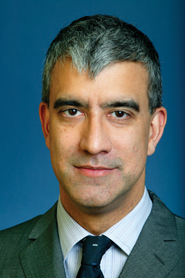Across the globe, foreign exchange desks are partying like it’s…well, any year but last year.
Traders talk of daily volume increases of 50 percent over this time last year at some institutional desks, and at least double-digit percentage gains being enjoyed by all. “They are saying there hasn’t been a month like this in years!” said Jeremy Boulton, an analyst for Reuters FX Buzz.
Electronic FX trading platform EBS, which is owned by interdealer broker ICAP, reported a 22 percent increase in January’s average daily volume on its platform, to $141.3 billion, compared with the previous year’s January volume of $116 billion.
In fact, EBS’s January volume number was higher than any single monthly number through all of last year. Thomson Reuters, the other top electronic trading platform, has not yet reported its January volume.

The surge-propelled mostly by very robust activity in a weakening Japanese yen and a strengthening euro-has notched up volatility, measured by a gauge of implied volatility of G7 currencies compiled by JPMorgan Chase & Co., and begun to erase memories of the year gone by, when volume was off by double-digit levels.
“Overall volume [in 2012] was generally muted, and Superstorm Sandy disrupted trading in the U.S.,” said Jeff Feig, global head of G10 FX at Citigroup. “And that affected volatility and resulted in what I would call an exaggerated downturn in volume.”
In global central banks’ biannual survey of average daily FX volume, released in late January, the U.S. and the U.K.-the two largest FX trading markets, which account for more than half of global trading volume-showed volume decreases of 19 percent in the U.S. and 7 percent in the U.K. for the month of October 2012, compared with the previous year. Hardest hit were spot trades, the plain-vanilla direct exchange of one currency for another that represent about half of all FX trading transactions, which dropped in average daily volume by about one-third last year in the U.S.
But that, as they say, was then. And now just a few months later, FX trading has come roaring back.
Much of the turnaround this year is being attributed to the decline in the value of the yen, as Japanese Prime Minister Shinzo Abe continues to push the Japanese central bank to spur growth, resulting in a devaluing of the currency. That has sent banks, hedge funds and institutional investors scrambling into the FX market to dump the yen in favor of any other safe-haven currency, such as U.S. dollars and euros.
Indeed, in the October biannual bank surveys, the Japanese central bank reported that daily foreign exchange volume at 19 major Japanese banks had actually climbed 6.3 percent compared with the previous survey in April 2012. “This is likely a trend move,” said Citigroup’s Feig. “We are seeing that the weakening yen will continue to drive FX activity.”
You don’t have to convince Kevin Rodgers, global head of foreign exchange sales and trading at Deutsche Bank in London. He just needs to glance across the trading floor to see the difference this year compared with the melancholy mood of last year. “I can look over to my trader who does spot transactions in the yen and see he is the busiest guy on the desk,” Rodgers said, adding that when the man isn’t shouting prices into the phone, he’s often besieged by salespeople asking questions on behalf of clients.
Shot in the Arm
This year’s robust activity is a needed shot in the arm to the FX market, which trades about $4 trillion in currency on an average daily basis.
This is a number that has more than doubled in the past eight years, despite last year’s stumble. “Even last year’s lower volume has to be taken in context,” cautioned Rodgers. “Overall, there is a lot more flow in the market compared to previous years simply because FX trading has continued to grow year-upon-year.”

But more important than trading volume to the FX traders’ mind-set is volatility-the variation in price of a given financial product over time-and that level can act as a much better gauge of trading activity.
From 1980 to 2001, the average monthly volatility in the FX market hovered around 10 percent, meaning foreign currencies on average varied in price compared to the U.S. dollar by that much in a given month, according to data from the Federal Reserve Bank of New York and the Organization for Economic Co-operation and Development. That compares to 17.45 percent for the S&P 500 and 8.27 percent for 10-year U.S. bonds during the same time period, according to the data.
During the financial crisis years, from 2008 to early 2010, FX traders saw volatility more than double, and trading volume surged. Last year, by contrast, volatility hit a low of 7.1 percent, a level not seen since July 2007, according to JPMorgan Chase’s volatility measure. This year, volatility levels are moving up again, indicating an increase in price variation that inevitably attracts new investors and heavier trading patterns.
“We’re slowly coming back to the historical volatility range we’ve usually operated under, precrisis,” said Deutsche’s Rodgers.
Even given that, some traders complain the FX market of late also has felt the lingering effects of a global loss of appetite for risk as well as the impact of new regulations on leverage and proprietary trading that were the resulting hangover of the 2008 credit crisis.
“Of course, it’s not like it was,” said Thomson Reuters’ Boulton, adding that he now sees an adjusting-down phase entering into the FX market, where traders and banks are making smaller trades and not using as much leverage as they did in the years leading up to the crisis.
Add to that mix the greater restrictions on proprietary trading by banks in the U.S. and elsewhere, and you see that traders are doing a fraction of what they were doing two or three years ago, he noted.
Indeed, even though some of these restrictions and new regulations have not even been fully implemented-such as the so-called Volcker rule, which would ban most proprietary trading at U.S. commercial banks. While the final version of the Volcker rule is expected to be implemented by U.S. regulators in March (and, indeed, might exclude FX spot trading from the restrictions), both the U.K. and Germany have moved ahead to put in place similar proprietary trading restrictions on their home banks. And whether the new restrictions are implemented yet or not, this regulatory zeal is already impacting the activities and the sentiment on FX trading desks.
“Traders are handcuffed by these limits on proprietary trading and restrictions on risk levels,” said Boulton, adding that traders not only worry about what their desks are allowed to do, but also about the creditworthiness of the clients they service.
“It used to be that traders around desks were making the trades and determining the acceptable levels of risk-if a trader saw movement happening in an area, he could wade in and make markets in it, or start buying for the bank’s own account,” he explained. “But now it’s the people in the risk department calling the shots, and traders are reduced to just pressing buttons and following the flow of a trade, and maybe, if they’re lucky, squeezing out a very small profit on the margin.”
Big Players & Big Investments
Driving the squeeze on profits, of course, is the fact that the FX market is heavily dominated by the largest banks, which control almost all FX volume. In fact, the top 10 currency trading desks account for almost 80 percent of average daily volume. Market leader Deutsche Bank handles 14.6 percent of average daily volume, according to a Euromoney FX survey taken last year. Citigroup with 12.3 percent and the U.K.’s Barclays Bank with 11 percent round out the top three foreign currency exchange desks, according to the survey.
That means that these trading desks-each working on behalf of their slice of institutional customers, hedge funds, other financial institutions, and their largest prime brokerage clients-are battling mightily for the same fistful of trading dollars. That has taken its toll. Given the down market last year, some FX desks-including, most recently, Morgan Stanley and Barclays-have laid off salespeople and traders. Late last year, Deutsche Bank announced that the squeeze on margins had slashed foreign-exchange revenue “significantly” in the third quarter of 2012; Barclays said its currency sales were declining, and UBS AG said its profits had been hurt by lower volatility.
Compounding this problem is the continual and climbing costs that global banks face just to keep their FX trading desks relevant. “New technology costs are increasing,” said Feig. “If you are going to compete, you have to have access to the latest data centers, have the newest pricing software and be able to pay for all the regulatory requirements. To be a big player, you have to invest a lot of money.”
Rodgers agreed, adding that if you look at Deutsche’s FX trading desk, the number of people who work it-around a few hundred, including the sales team-is pretty similar to the number of people working on it a decade ago. The difference is in the composition of the team, he says. Voice traders, price checkers and their myriad assistants are far fewer, as the operations of pricing and trading have been taken over almost completely by computers and algorithmic software. “The machines are taking on most of the heavy lifting-in spot transactions, for example, about 80 percent of volume is handled by machine,” Rodgers explained. “The desk is a little like an airplane on autopilot, with the human element there for complex tasks and, of course, for emergencies.”
Certainly, trading on or hedging against emergencies like economic unrest or political upheaval is much of what foreign currency exchange is all about-at least during its most frenzied times. Now, whether the run on the yen has long-term legs or not, the question is whether currency trading is returning to a less-crisis-driven, but not altogether quiet, cycle of trading.
“It’s not frantic,” said Rodgers. “Yet it’s a steady buzz of activity.” And for some on the FX desks, that alone is worth celebrating.
(c) 2013 Traders Magazine and SourceMedia, Inc. All Rights Reserved.
http://www.tradersmagazine.com http://www.sourcemedia.com/



